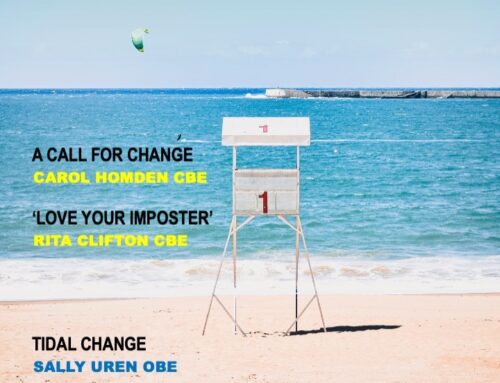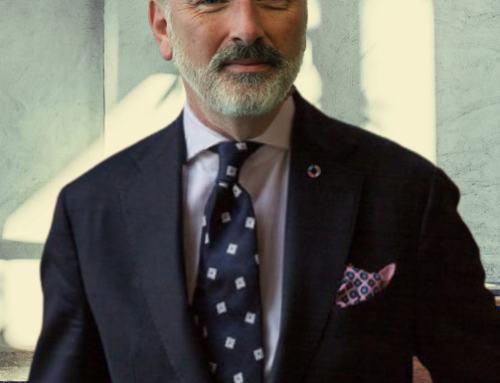Knowns & Unknowns in Retail
Omnicom Retail Group

There has been a significant amount of excellent analysis done on COVID-19 and its impact on consumers. We’ve also seen many reports on changes in shopping trips, category preference and retail performance. Much of this confirms the experiences all of us are having every day — from worry about our loved ones to irritation at not having bought enough toilet paper 3 weeks ago. The data provided on this is essential, especially for coordinating what have now become daily response teams to the changing commercial reality on the ground. But it seems safe to assume that there’s little to add by deeply diving into the already well-documented reasons for these changes.
In this piece, we start with that baseline reality- things we know with certainty at this point. A non-exhaustive but comprehensive list of shopper reality as it stands in the midst of COVID-19’s growing outbreak – the “Great Big Knowns” of COVID-19 commercial life. From there, we look at the major “known unknowns” – a business problem or opportunity that presents itself as a result of the thing we know to be true today. The longer piece (available at https://www.omnicomretailgroup.com/wp-content/uploads/COVID-19-final.pdf) breaks out 10 of these knowns, and then parallels 10 known unknowns that spring from those major areas of significant change.
Our ‘“knowns” are primarily focused on the implications for how people shop, what they buy and the places that sell the things people buy and are not meant to be a comprehensive list of the shifts in the world caused by the COVID-19 pandemic. In the main piece there are 10 specific ones, quickly summarized below under 3 main headers – behaviors, communities and connections:
Behaviours: Shoppers continue to use eCommerce whenever they can as that system struggles to meet new and unprecedented demand levels. Essential stores remain open, and their workers have become a line of “first responders” helping people through the crisis. People are stockpiling needs, not wants, and the stores that sell wants are largely closed.
Communities: In-person commerce and the businesses that rely on it have disappeared, and the gathering that creates the lifeblood of communities has paused. impulse purchase from in-person shopping has dried up. The commercial ecosystem that supports this world (particularly in urban areas) is in severe disrepair.
Connections: Beyond physical community, many of our great cultural bonding moments are on hold, and the brands that are holding us together are brands as diverse as Joe Exotic and Comcast.
The Known Unknowns
All of these “knowns” create a series of possible actions and decisions for our clients. These “Known Unknowns” are some key areas of focus for companies looking to get through and beyond the COVID-19 pandemic:
Behaviour
- Plan to reach shoppers that have converted to eCommerce for needs-based shopping differently – and realize that in eCommerce profitability is built one shopper and basket at a time, not one category and store at a time.
- Brick and mortar retail needs to reintroduce itself – the “stockup-ocalypse” combined with fear of contagion has made shopping a necessary but harrowing experience. At the same time, grocery retailers are going to be seen as iconic and heroic participators in the battle against COVID-19 and should have a window to rebuild and strengthen shopper relationships.
- Pantry loaded shoppers will need ongoing communication as they may not be back shopping the category for months
- Re-igniting discretionary purchase with shoppers facing steep economic recovery
Community
- The economic difficulty in this crisis will be felt by hard to reach parts of the economy – bartenders, yoga instructors, cleaning staff. Companies part of these ecosystems should be leaning in to help.
- Franchisees play a unique role in many of their communities and supporting them can mean supporting new and unfamiliar micro-communities.
- Data will need to replace what display used to for brands and categories that rely on impulse purchase, reaching unanticipated shopper needs in a digital not physical journey.
Connection
- Different regions are going to face vastly different impact from COVID – many large companies have lost their regional marketing skill and will need to get it back.
- New shared experiences are emerging and will emerge to fill the void created by the lack of in-person and live entertainment.
- Brands that ensure people remain connected to one another are vital. Some of those are already vital brands in the lives of consumers, while some are more utilitarian or better known for friction than inspiration. These brands have a chance to reinvent their relationship to people.
Conclusion
There are probably thousands of implications for companies across the scope of their operations for managing through and beyond the COVID-19 pandemic. Hopefully this guide on a specific slice of that (how people are buying the things they need) can prove helpful to decision makers trying to ride the avalanche of the urgent find headspace to focus on these sometimes urgent, but important “known unknowns”.
Bryan Gildenberg
SVP, Commerce at Omnicom Retail Group
https://www.omnicomretailgroup.com/

Knowns & Unknowns in Retail
Omnicom Retail Group

There has been a significant amount of excellent analysis done on COVID-19 and its impact on consumers. We’ve also seen many reports on changes in shopping trips, category preference and retail performance. Much of this confirms the experiences all of us are having every day — from worry about our loved ones to irritation at not having bought enough toilet paper 3 weeks ago. The data provided on this is essential, especially for coordinating what have now become daily response teams to the changing commercial reality on the ground. But it seems safe to assume that there’s little to add by deeply diving into the already well-documented reasons for these changes.
In this piece, we start with that baseline reality- things we know with certainty at this point. A non-exhaustive but comprehensive list of shopper reality as it stands in the midst of COVID-19’s growing outbreak – the “Great Big Knowns” of COVID-19 commercial life. From there, we look at the major “known unknowns” – a business problem or opportunity that presents itself as a result of the thing we know to be true today. The longer piece (available at https://www.omnicomretailgroup.com/wp-content/uploads/COVID-19-final.pdf) breaks out 10 of these knowns, and then parallels 10 known unknowns that spring from those major areas of significant change.
Our ‘“knowns” are primarily focused on the implications for how people shop, what they buy and the places that sell the things people buy and are not meant to be a comprehensive list of the shifts in the world caused by the COVID-19 pandemic. In the main piece there are 10 specific ones, quickly summarized below under 3 main headers – behaviors, communities and connections:
Behaviours: Shoppers continue to use eCommerce whenever they can as that system struggles to meet new and unprecedented demand levels. Essential stores remain open, and their workers have become a line of “first responders” helping people through the crisis. People are stockpiling needs, not wants, and the stores that sell wants are largely closed.
Communities: In-person commerce and the businesses that rely on it have disappeared, and the gathering that creates the lifeblood of communities has paused. impulse purchase from in-person shopping has dried up. The commercial ecosystem that supports this world (particularly in urban areas) is in severe disrepair.
Connections: Beyond physical community, many of our great cultural bonding moments are on hold, and the brands that are holding us together are brands as diverse as Joe Exotic and Comcast.
The Known Unknowns
All of these “knowns” create a series of possible actions and decisions for our clients. These “Known Unknowns” are some key areas of focus for companies looking to get through and beyond the COVID-19 pandemic:
Behaviour
- Plan to reach shoppers that have converted to eCommerce for needs-based shopping differently – and realize that in eCommerce profitability is built one shopper and basket at a time, not one category and store at a time.
- Brick and mortar retail needs to reintroduce itself – the “stockup-ocalypse” combined with fear of contagion has made shopping a necessary but harrowing experience. At the same time, grocery retailers are going to be seen as iconic and heroic participators in the battle against COVID-19 and should have a window to rebuild and strengthen shopper relationships.
- Pantry loaded shoppers will need ongoing communication as they may not be back shopping the category for months
- Re-igniting discretionary purchase with shoppers facing steep economic recovery
Community
- The economic difficulty in this crisis will be felt by hard to reach parts of the economy – bartenders, yoga instructors, cleaning staff. Companies part of these ecosystems should be leaning in to help.
- Franchisees play a unique role in many of their communities and supporting them can mean supporting new and unfamiliar micro-communities.
- Data will need to replace what display used to for brands and categories that rely on impulse purchase, reaching unanticipated shopper needs in a digital not physical journey.
Connection
- Different regions are going to face vastly different impact from COVID – many large companies have lost their regional marketing skill and will need to get it back.
- New shared experiences are emerging and will emerge to fill the void created by the lack of in-person and live entertainment.
- Brands that ensure people remain connected to one another are vital. Some of those are already vital brands in the lives of consumers, while some are more utilitarian or better known for friction than inspiration. These brands have a chance to reinvent their relationship to people.
Conclusion
There are probably thousands of implications for companies across the scope of their operations for managing through and beyond the COVID-19 pandemic. Hopefully this guide on a specific slice of that (how people are buying the things they need) can prove helpful to decision makers trying to ride the avalanche of the urgent find headspace to focus on these sometimes urgent, but important “known unknowns”.
Bryan Gildenberg
SVP, Commerce at Omnicom Retail Group
https://www.omnicomretailgroup.com/



